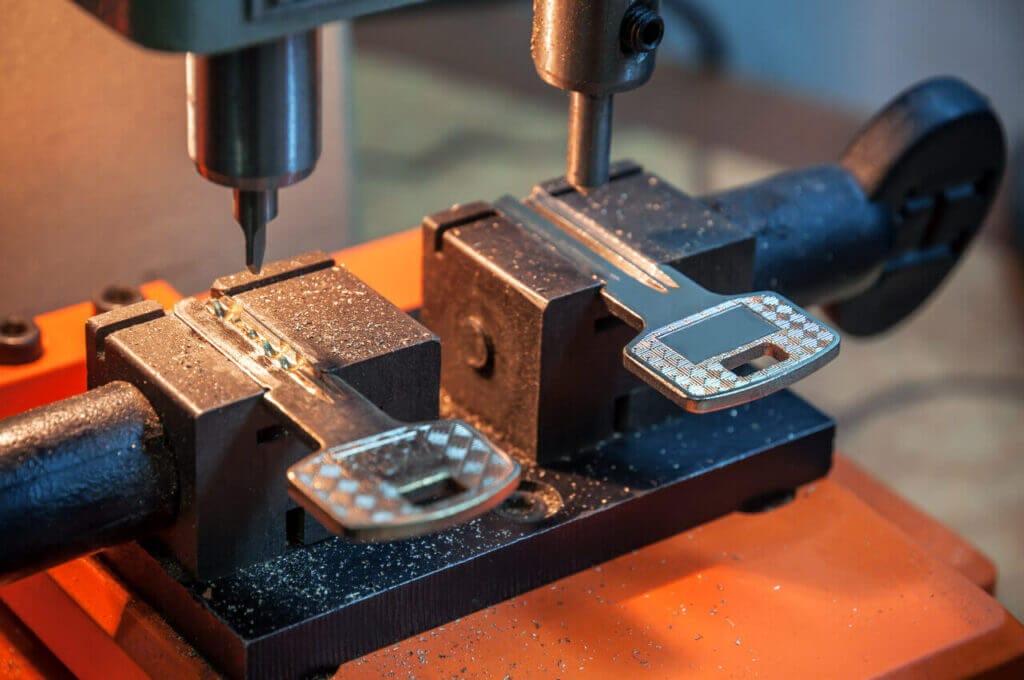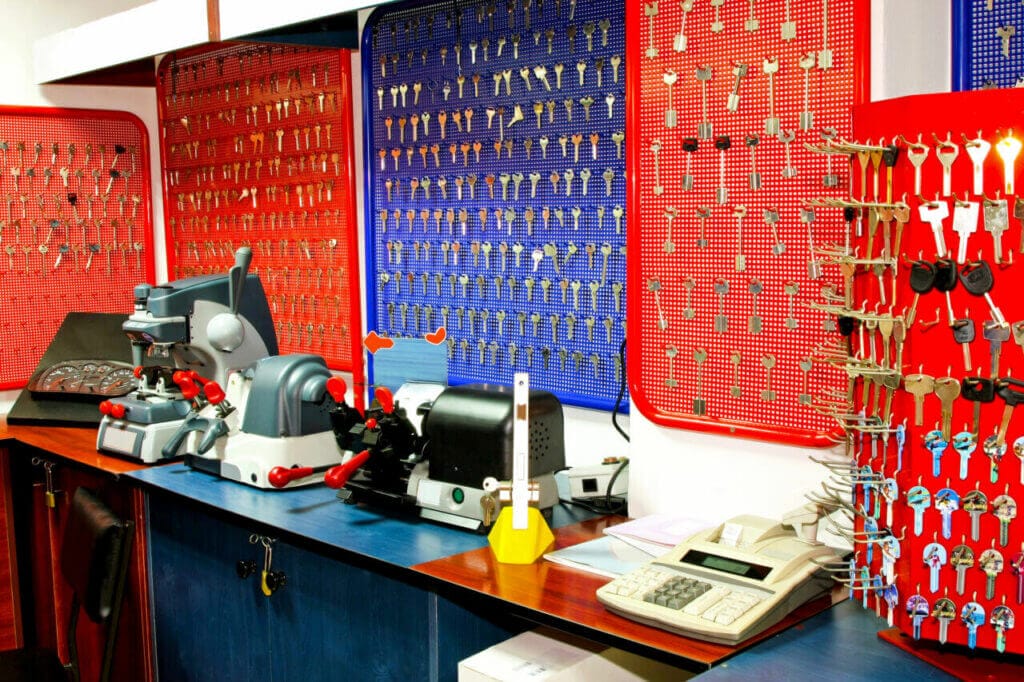Wondering just how you can get a key made without original key, since you have lost your key? Or maybe you are just wondering whether locksmiths can help in such situations and if they can, then what exactly is the ‘magic’ behind it? Skilled locksmiths certainly can help, since they are capable of making new keys even without having access to the original key!
Losing your key without having a spare key is highly distressing. It can leave you stranded outside your home with no way in. This is why it is highly recommended that you always keep a spare key accessible. However, now that you have found yourself in this sticky and unnerving situation, then as mentioned above, you can be sure that a locksmith will be able to help you find your way out of it! By utilizing their specialized tools and professional knowledge, they can craft a whole new key for you along with a spare one.
But how exactly do locksmiths make a duplicate key without the original? This is possible thanks to a technique called lock impressioning. Appease your curiosity by having a peek into the impressioning progress!
How Do Locksmiths Utilize Lock Impressioning to Duplicate Keys Without the Original Key?
Here are the primary steps to get a key made without original through the use of lock impressioning technique.
1. Obtain a Blank Key
First of all, a blank key needs to be procured. But what is a blank key? It is a key which has not been cut into a specific bitting. As such, it is basically a template/base for getting the key cut into required bitting.
These keys are made of a wide range of materials, which include aluminum, steel and soft brass. Aluminum and steel key blanks are not highly recommended. Aluminum is prone to breaking, while steel is too sturdy. Both factors are not ideal for impressioning. The most suitable option is soft brass. It is soft yet strong, making it easy to obtain markings and be molded.
The blank keys can be found in online stores or hardware shops, but the right one needs to be carefully chosen. There is a wide variety of them available, but each lock requires a specific type of key. Figuring out a key blank that is compatible with the lock requires a locksmith’s expertise.

2. Prepare the Blank Key
Now that the compatible blank key has been obtained, it is time to for it to be prepared to receive the pin or wafer markings. As the key has a rough and uneven surface, it needs to be gently filed to be smoothened up. Additionally, a Pippin file can be used to file the key tip into a sharp knife-like point. This helps make the marking process more effective.
Additionally, as the marks can be hard to discern, the preparation of keys can include coating to make the marks more easily readable. A common technique known as smoking the key is can be used. It entails using a lighter and holding it underneath the key for a few seconds. This coats the key with the soot resulting from it, making the marks clearer.
Alternatively, wax, paint, sharpie markers, etc. can be used to make the marking clearer.
3. Mark the Blank Key
With the blank key prepared for receiving the lock marks, the process can finally begin. The key needs to be inserted and moved around in the lock for the marking process. However, doing the procedure with merely with hands is not recommended. It would be tricky to deliver enough force and comfortably handle the key. Hence, vice grips can be used in order to have a firm grasp and comfortable control over the key.
With vice grips, insert the key into the keyhole. Then there are three methods that can be used for the blank key to capture the marks from the pins or wafers. These are the following techniques:
- Rocking: The key is bumped around in different directions and twisted in both clockwise and counterclockwise motions.
- Striking: The key is gently tapped with gentle blows through a mallet.
- Pulling: The key is inserted and while maintaining the pressure, it is slightly pulled out.
Either method needs to be carried out with a good knowledge of how to bump and maneuver the key inside the keyhole. It also requires the right amount of force. The tension should be strong enough to capture the markings, while not damaging to the key.
3. File the Blank Key
Once the blank key adequately obtains the marks, it should be filed to begin cutting to the bitting. The marks need to be identified for that procedure. However, they might be hard to be seen even with coating. Which is why magnifying glass can be utilized, typically a mounted or standing one so that the filing process is not disrupted. UV lights or microscopes may also be used.
Each mark left from the pins or wafers needs to be filed, little by little. It takes a lot of care and attention to make the right cuts at the right angle and position, otherwise the whole process to duplicate key without the original through impressioning would be ruined.
4. Repeat Marking and Filing the Blank Key
The process of marking the blank key and then filing it needs to be repeated various times, rather than just once. Until the key is able to operate the lock smoothly, it will be meticulously repeated and molded. Once the key works perfectly, the process to make duplicate key without original
How Long Does It Take To Make a Duplicate Key With Impressioning?
You might be fearing that this procedure takes a century… However, the procedure normally takes only about 20-60 minutes, depending on the complexity. A skilled locksmith can get this procedure done in such a little time and allow you to regain access to your home soon.
Additionally, the locksmith can use the new key to craft a spare key, so that you can avoid this kind of problem in the future. It require only need a couple of minutes to duplicate the new key through a key duplicator machine.

Are There Any Limitations for Getting a Duplicate Key Made Without the Original Key?
In general, the process of having a locksmith make a duplicate key without the original key should be very smoothly accessible. You should keep in mind that you would need to provide adequate proof that you are in fact someone who owns or rents the house, or own the car in case of a car key replacement. Proof of house ownership or rent status includes ID card, mail, etc. As for the cars, the car registeration form and government-issued documents can be adequate.
However, if the lock uses a restricted key system, then having a replacement or duplicate key made needs further authorization. That is because if the lock keys are restricted, they are backed with a utility patent. In order to copy a key, the locksmith is legally required to seek authorization from the manufacturer.
Need a Key Duplication? We Can Make a Duplicate Key Without the Original for You
If you have lost your house keys or if your car key is lost, then you may be distressed if it would be possible to get a replacement key. However, the good news is that professional locksmiths can get a key made without original. By utilizing the lock impressioning technique used to make a copy of a key, locksmiths use a key blank which is inserted into the lock in order to capture the marks of pins or wafers. These marks are then used as a guidance to file the key blank and cut it into the right bitting. This process is repeated until the perfectly working copy is made!
If you are looking for a local locksmith in Pickering to make a duplicate key without an original key for you, then get in touch with our Pickering locksmiths! Our locksmiths are trained to make a new key for you in a timely manner as we understand time is priceless for such a big issue. Additionally, we can duplicate the key so that you can have a spare key which would save you from such dire situation in the future.
